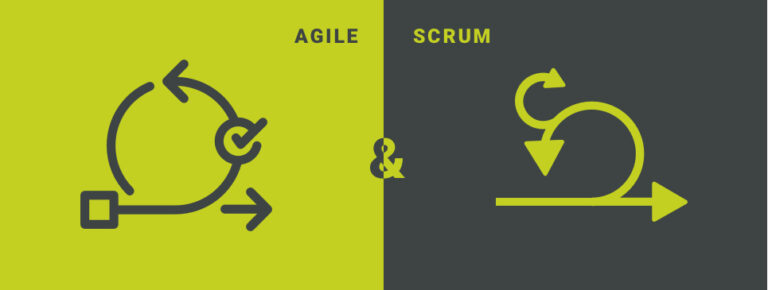Software development methodology is a methodology used to create the structure, plan, and control the implementation of a project. This time we will discuss two software development methods, namely Agile and Scrum methods. Here’s the review:
Agile Method
Agile Method is a set of software development methods based on the same principles or short-term system development. Thus, the agile method requires quick adaptation from developers to changes in any form. The agile method prioritizes team agility so this method is very fast in its development. In addition, the agile method can address changes quickly and can be fixed quickly. The agile method is characterized as light, free to move quickly, and alert.
There are several steps in Agile Development Methods, namely:
- Planning: In this step, developers and clients make plans about the needs of the software to be created.
- Implementation: Part of the process where programmers do software coding.
- Software testing: Here, the software that has been created is tested by the quality control department so that any bugs found can be fixed immediately and the software quality is maintained.
- Documentation: After software testing, the next step is the software documentation process to facilitate future maintenance processes.
- Deployment: This is a process carried out by quality assurance to test the system’s quality. Once the system meets the requirements, the software is ready for deployment.
- Maintenance: The last step is maintenance. No software is 100% free of bugs, therefore it is very important for software to be maintained periodically.
Scrum Method
Scrum method is a framework for software development management with agile and iterative characteristics. Scrum defines itself as a flexible, comprehensive development strategy where the entire team works as one unit in achieving a common goal.
Important processes in Scrum include:
- Backlog refinement: Product Backlog Refinement is the act of adding detail, estimation, and ordering items in the Product Backlog. Ongoing Product Backlog refinement is required in every Sprint to narrow down items ready for the upcoming Sprint.
- Sprint planning: Sprint Planning often needs to be prepared to ensure that the Product Backlog has been refined to an appropriate detail level, with estimates and acceptance criteria. If Product Backlog Items have been analyzed and thought about during the product backlog refinement process, in the Sprint Planning meeting, the main priority Product Backlog items can be well understood and easily selected.
- Daily Scrum: The development team uses daily scrums to review progress towards the sprint goal. The Daily Scrum optimizes the likelihood of developers achieving the sprint goal. Every day, the development team must understand how they can work together as a self-organizing team to achieve the sprint Goal.
- Sprint review meeting: During the Sprint Review, the Scrum Team and stakeholders collaborate on what was done in the Sprint planning. Based on that and any changes to the Product Backlog during the Sprint, participants collaborate on the next things that can be done to optimize value. The Sprint review meeting is an informal meeting, intended to obtain feedback and collaboration among the teams.
- Sprint retrospective meeting: The Sprint Retrospective takes place after the Sprint Review and before the next Sprint Planning. The Scrum Master ensures that the event takes place and the team understands its goals. It is an opportunity for the Scrum Team to grow and all members must attend.
During the Sprint Retrospective, the team discusses:
- What went well in the Sprint?
- What could be improved?
- What will we commit to improving in the next Sprint?
Thus, that’s the review of the agile vs scrum methods from several sources. For a more detailed explanation, please visit the sources that have been written.










+ There are no comments
Add yours